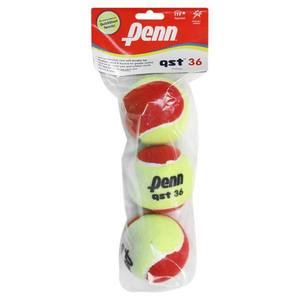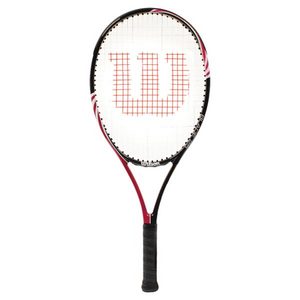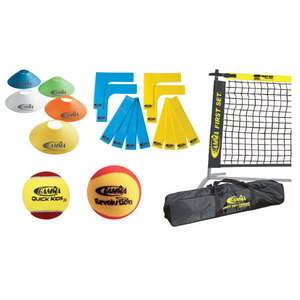Since September 7, 2010, there have been questions about the USTA’s new 10 and Under Tennis program and what exactly it means for everyone. In terms of junior development, anyone under the age of 10 will be participating in a system of modified rules for the game of tennis. These modifications include changes to the ball, the racquet, the court, as well as the scoring.

So what exactly is the goal of these modifications? The simplest way to explain it is in relation to other sports, particularly baseball. When children are six years old, they are not playing with the same ball, glove, bat, or even on the same field as a teenager. Instead, they are using equipment that is appropriately sized for their body, which means they are using shorter fields, smaller and lighter bats, as well as lighter balls. In similar respect, junior tennis is changing the four aspects to not only assist children in their development and lessen the risk of injury, but more importantly, make the game more fun.
 So first, let’s talk about the ball, which has remained relatively unchanged throughout the course of history. Instead of one single ball for all age groups, there is now a progression being produced of varying weights and compression ratings. These changes make the ball travel slower and bounce lower, making them much easier to hit and rally with for children that are still in the development stage. While a typical ball might bounce above the head of a six-year-old, the lower 36 compression ball, which is signified by the red and yellow color, will only bounce about half that height, a much more appropriate level. It is obvious to see that by promoting longer rallies you know only help to develop strokes quicker, but you increase the level of enjoyment, the only absolute way of convincing children to keep choosing tennis in the future. As children get older, the compression gradually increases until by the age of 11, the lower compression green and yellow ball can be used for beginner and intermediate players while more advanced players are fine to progress to the standard.
So first, let’s talk about the ball, which has remained relatively unchanged throughout the course of history. Instead of one single ball for all age groups, there is now a progression being produced of varying weights and compression ratings. These changes make the ball travel slower and bounce lower, making them much easier to hit and rally with for children that are still in the development stage. While a typical ball might bounce above the head of a six-year-old, the lower 36 compression ball, which is signified by the red and yellow color, will only bounce about half that height, a much more appropriate level. It is obvious to see that by promoting longer rallies you know only help to develop strokes quicker, but you increase the level of enjoyment, the only absolute way of convincing children to keep choosing tennis in the future. As children get older, the compression gradually increases until by the age of 11, the lower compression green and yellow ball can be used for beginner and intermediate players while more advanced players are fine to progress to the standard.
 The next piece is the racquet. Many of us have seen the old pictures and videos of Agassi or Sampras as a child swinging a heavy, adult sized racquet. Well that was the past, and with the sport in its current state, the current movement is designed to improve the development of junior players for future generations. So now, the general rule is for children under the age of eight should not be using a racquet that is longer than 23 inches. Unless the child is tall for his age, the chance is high that the racquet will be too long and too heavy for him or her. Another general rule is that when a child holds the racquet down at their side, there should be at least two inches between the ground and the frame. A racquet that is too long and heavy hurts growth and encourages poor technique. It also stifles the fun of the game, deterring children from continuing to play tennis. This means that no child under the age of 11 would be allowed to use a 27 inch racquet in tournament play, which could cause some issues for current juniors that learned on larger than ideal racquets. While the larger racquet is not the best option, it is what they may be used to.
The next piece is the racquet. Many of us have seen the old pictures and videos of Agassi or Sampras as a child swinging a heavy, adult sized racquet. Well that was the past, and with the sport in its current state, the current movement is designed to improve the development of junior players for future generations. So now, the general rule is for children under the age of eight should not be using a racquet that is longer than 23 inches. Unless the child is tall for his age, the chance is high that the racquet will be too long and too heavy for him or her. Another general rule is that when a child holds the racquet down at their side, there should be at least two inches between the ground and the frame. A racquet that is too long and heavy hurts growth and encourages poor technique. It also stifles the fun of the game, deterring children from continuing to play tennis. This means that no child under the age of 11 would be allowed to use a 27 inch racquet in tournament play, which could cause some issues for current juniors that learned on larger than ideal racquets. While the larger racquet is not the best option, it is what they may be used to.
Another important change is that as the child grows, they begin progressing to courts of larger size until reaching the full size court at the age of 11. At younger ages up to age 8, courts are actually turned, using only the space between the service line and the baseline. This allows for two courts to be set up on a single traditional court, increasing the number of children that can play at one time. The total length of the junior court will measure 36 feet, less than half the length of a traditional court, which is much more conducive to the type of play that younger children are capable of. In the 9-10 age group, the total court distance measures 60 feet in length, and 21 feet wide for singles. By comparison, a typical singles court measures 78 feet in length and 27 feet in width. By making the court shorter and narrower, the style of play is still designed to promote longer rallies and stroke development. Blended lines are painted to signify the new court dimensions, and are intended to be easily distinguishable from the standard lines. These blended lines are of a color that is either lighter or darker than the court surface, and will end three inches from the white lines.

The scoring system also undergoes a progression as children get older. In the beginning stages between the ages of five and eight, each set will consist of only a seven point tie-break, and the match will be decided in a best two of three set format. This allows kids to play quick games and experience a wider range of opponents. In addition, it lessens the potential for the players forgetting the scores. For children ages 9-10, the scoring system is advanced to playing a best of three set match using 4-game sets for the first two. Should the players split sets; a 7-point tiebreak will decide the winner. Upon reaching the age of 11, children will compete on a standard-sized court, but will be given the option of using a lower compression ball and/or modified scoring systems designed for increased pace of play.

With as much talk as this newest movement has generated, one has to wonder about whether or not it will succeed. From initial analysis, the main point behind the development of 10 and Under Tennis is to outfit children with appropriate equipment and courts that will increase enjoyment. With the large number of sports available, generating and keeping the interest of a child is becoming more and more difficult, so a movement that is designed to prolong rallies sounds good on paper. Forcing kids to use somewhat standardized racquets is a unique move that could cause problems as the rules begin to be enforced. Imagine the awkward situation of a nine-year-old child that has been playing with a 26 or 27 inch frame and is used to it. Even though it may not be the most appropriate for his current size, if he is used to it and enters a tournament, he would be forced to buy a new racquet that is at most 25 inches long just to compete under the rules. In that kind of situation, one has to be cautious of hurting the development and enjoyment of that child. At the same time, the 10 and Under Tennis concept shows a positive benefit of slowing the ball down, allowing children to play longer rallies and hopefully learn more developed strokes that will serve them well in the future.

